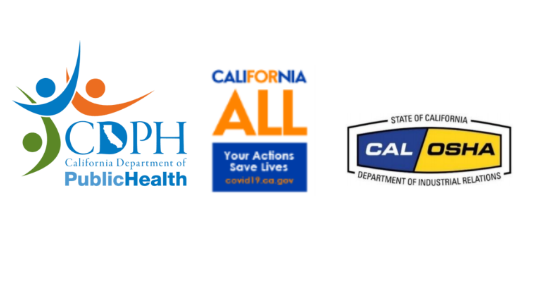Title Page
-
Conducted on
-
Prepared by
-
Location
Contents of Written Worksite Specific Plan
-
The person(s) responsible for implementing the plan.
-
A risk assessment and the measures that will be taken to prevent spread of the virus.
-
Training and communication with employees and employee representatives on the plan.
-
A process to check for compliance and to document and correct deficiencies.
-
A process to investigate COVID-cases, alert the local health department, and identify and isolate close workplace contacts of infected employees until they are tested.
-
Update the plan as necessary to prevent further cases.
Topics for Employee Training
-
Information on COVID-19, preventing spread, and who is especially vulnerable.
-
Self-screening at home, including temperature and/or symptom checks using CDC guidelines.
-
The importance of not coming to work if employees have a frequent cough, fever, difficulty breathing, chills, muscle pain, headache, sore throat, the recent loss of taste or smell, or if they or someone they live with has been diagnosed with COVID-19.
-
When to seek medical attention.
-
The importance of hand washing.
-
The importance of physical distancing, both at work and off work time.
-
Proper use of cloth face covers
Individual Control Measures and Screening
-
Symptom screenings and/or temperature checks.
-
Encourage workers who are sick or exhibiting symptoms of COVID-19 to stay home.
-
Encourage frequent handwashing and use of hand sanitizer.
-
Provide disposable gloves to workers using cleaners and disinfectants when required. Consider gloves as a supplement to frequent handwashing for other cleaning, tasks such as handling commonly touched items or conducting symptom screening.
-
Strongly recommend employee use of cloth face covers.
-
Restrict and screen non-employees entering the facilities
-
Post signage requesting visitors to wear face masks or covers
Cleaning and Disinfecting Protocols
-
Perform thorough cleaning in high traffic areas.
-
Frequently disinfect commonly used surfaces.
-
Clean and sanitize shared equipment between each use.
-
Clean touchable surfaces between shifts or between users, whichever is more frequent.
-
Provide and locate hand sanitizer and sanitizing wipes where workers can use them
-
Ensure that sanitary facilities stay operational and stocked at all times.
-
Use products approved for use against COVID-19 on the Environmental Protection Agency (EPA)-approved list and follow product instructions and Cal/OSHA requirements.
-
Provide time for workers to implement cleaning practices before, during, and after shifts and consider hiring third-party cleaning companies.
-
Install hands-free devices if possible.
-
Consider upgrades to improve air filtration and ventilation.
Physical Distancing Guidelines
-
Implement measures to physically separate workers by at least six feet using measures such as physical partitions or visual cues (e.g., floor markings, colored tape, or signs to indicate to where workers should stand).
-
Use signage to remind customers of physical distancing at every opportunity.
-
Adjust in-person meetings, if they are necessary, to ensure physical distancing.
-
Stagger employee breaks, in compliance with wage and hour regulations, to maintain physical distancing protocols.
-
Reconfigure, restrict or close breakrooms and create alternative space for breaks where physical distancing is possible.
-
Provide separate, designated entrances and exits.
-
Encourage and train employees to practice physical distancing during pickup and delivery.
-
Install transfer-aiding materials, such as shelving and bulletin boards, to reduce person-to-person hand-offs where possible. Wherever possible, use contactless signatures for deliveries
-
Use the following hierarchy to prevent transmission of COVID-19 in work areas especially where physical distancing is difficult to maintain: engineering controls, administrative controls, and PPE.
Sign Off
-
Name and Signature
















